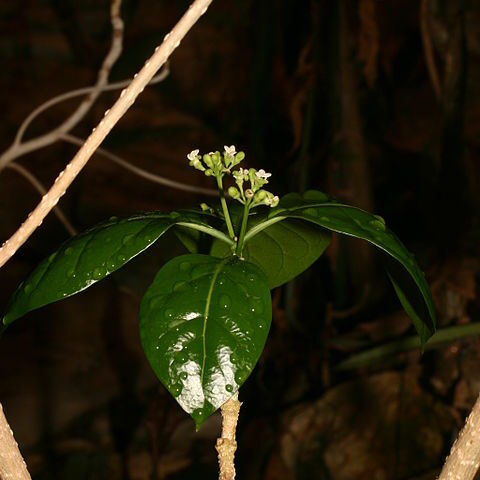Male flowers in terminal or axillary few-flowered inflorescences; bracts very small, obsolete or absent; calyx-tube ± cupular, truncate, subentire or shallowly 3-lobed; petals 3, inserted below the margin of the disk, imbricate; stamens (?2)3, altemipetalous, inserted with the petals, with introrse anthers dehiscing by longitudinal slits; disk fleshy, cupular, usually elevated in the centre into a vestigial ovary.
Female flowers solitary, terminal; calyx-tube elongated, smooth and longitudinally striate or tuberculate to echinulate, with usually 4 inconspicuous lobes, petals usually 4; disk epigynous; staminodes present; ovary bicarpellary; style columnar, short and thick; stigmas 2-lobed; ovules 2-seriate on each placenta.
Leaves simple, opposite or subopposite, penninerved, petiolate; stipules absent.
Seeds subellipsoid to subglobose; endosperm abundant, horny.
Fruit indehiscent, crowned by the persistent style.
Small dioecious trees or shrubs.
